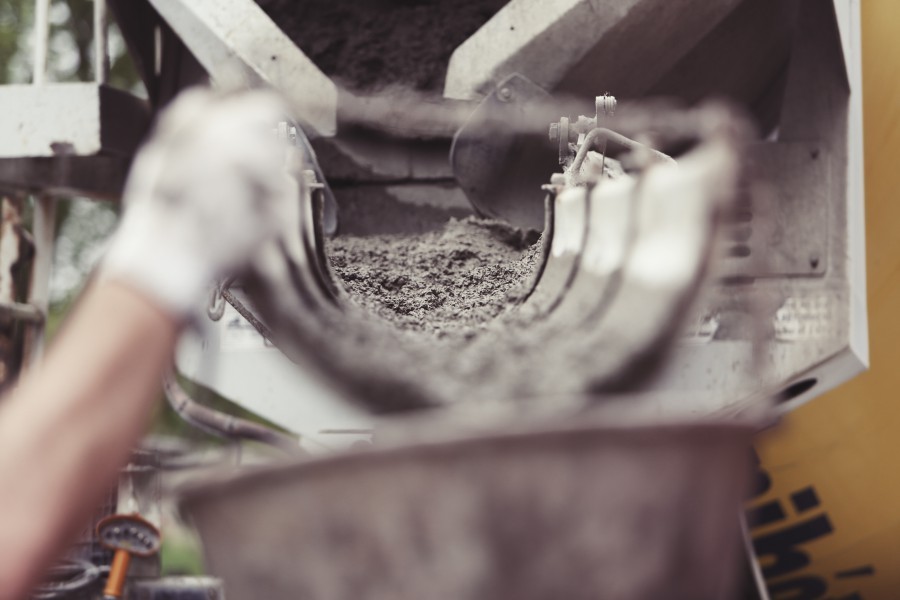Surplus production of manufacturing products may often be a cause for concern, particularly when channels for absorbing the surplus are hard to find. This unwittingly appears to be the case with Bangladesh's cement industry.
It is true that that the country's cement industry has grown without much of a direction in meeting the demand of domestic market as well as of exports. While it is heartening to see that for sometime now, the country is self-sufficient in cement despite increasing demand from mega infrastructure projects and the real estate sector, the surplus production remains a burden. The country's annual requirement of cement is estimated to be around 25 million tonnes, while the total production capacity of the cement plants is well above 43 million tones with installed capacity of nearly 50 million tonnes.
This undoubtedly makes a point clear. Investment in cement was not meant to meet domestic demand alone. Indeed the entrepreneurs had an eye on exports.
But did that actually happen but for some occasional shipments? One thus tends to find something wrong with the plans to go for large-scale investment in cement manufacturing. There are also reports that some manufacturers are expanding their capacity in anticipation of spiralling demand in future.
While surplus production is a burden in the absence of exporting avenues, intense competition among domestic rivals coupled with sudden hike in the price of raw materials - mainly clinkers - has brought a sorry state for the industry as a whole. The local prices have slumped despite a significant increase in production cost. According to industry insiders, the average price of cement went down by Tk 15 a bag to Tk 385 at the end of the last year. Dependence on imported clinkers, slag and gypsum is made worse by price hike of these items along with the adverse exchange rate caused by devaluation of the Bangladesh currency lately.
There is no denying that unless cement manufacturers find suitable outlets for export, they will have to wrestle with the difficult situation now prevailing on the domestic front.
Cement being one of those products requiring mandatory compliance of standards by most countries - often at variance with each other - its export is fraught with a long and cumbersome process of registration with the designated standard institution of the overseas country concerned. This being the case, there is no way an exporter can cut his path short, and has to follow each and every step methodically and meticulously to be finally registered and allowed to export. Around a decade ago, when the Indian states of Tripura and Meghalaya needed cement from Bangladesh, some Bangladeshi manufacturers went through the process and succeeded in being registered with the relevant Indian organisation (the Bureau of Indian Standards). However, after few shipments, absence of export orders halted export to that country. Observers think, for the sake of sustaining the growth of the sector, Bangladeshi cement manufacturers should explore more and more avenues in potential overseas markets.
It is true that the big development projects currently under implementation as well as those in the pipeline have attracted increased investment in the cement sector. But now that production has far outgrown the actual requirements, some practical steps are urgently needed to see that the efforts and money spent on the sector are not wasted, and that the sector finds the right direction to survive and sustain.
As mentioned above, exploring markets for cement calls for fulfilling mandatory standard requirements of importing countries. Now that Bangladeshi cement is used in the mega infrastructure projects and some firms have experience in exporting as well, the issue of standard related compliance may not pose too challenging to get through. The important part here is that firms intending to export should be well familiar with the practices and procedures followed by importing countries before applying for registration. The procedures in most cases are time consuming involving among others thorough inspection of factories in the export country. However, once the procedures are done with and firms are given registration by the designated agency of the importing country, the problem gets solved once and for all.
Given the time consuming process in getting registered with the importing country's designated authority, it would be worth the effort for intending exporters to first identify the markets where prospect of exporting is not only high but is also likely to prevail for a reasonably long period of time. Over and above, trading practices, particularly non-tariff measures followed in those markets, should also be carefully examined.
Against this backdrop it all depends on how earnest our manufacturers are to go through the process to be able to access potential markets overseas. Apparently, there is no choice but to go for it. To sustain the growth of the country's cement industry, finding markets is the only way out. No country can afford to sit on surplus production, nor is it viable to run plants below capacity.


